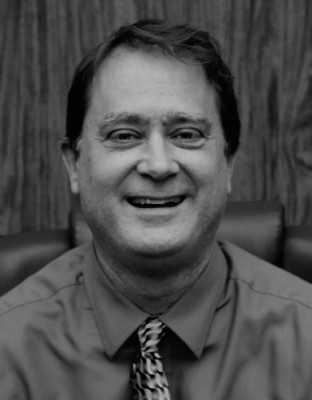
PUSD recently completed very productive negotiations with the United Teachers of Pasadena (UTP) for the 2021-2022 year. Although raises were not as high as the historically very high rate of inflation, recently reported to be 8.5% from March 2021 to March 2022, the raises are higher than the great majority of districts in the region and for most PUSD teachers are the highest in over 20 years. I say most because for the first time ever, an agreement was reached to give different raises to different members of the union. Before we get into the details, let’s first go over a bit of history on that topic.
For many years previous boards have wanted to explore raising employee salaries by different amounts depending on where the particular employees ranked with respect to their peers in other districts, or to offer more for certain positions that are difficult to staff nationally, such as speech pathologists, special education teachers, math and science teachers, etc. This was a priority for previous boards because they wanted to provide the best possible instruction for students. Usually, such ideas were not received well by union representatives as they would violate the time-honored “me too” culture of collective bargaining, where every member of a group gets the same raise. Previous boards were also aware as many as ten years ago that the teachers’ salary schedule had no automatic annual raises (called steps) for mid-career teachers past step 8, and so without negotiated raises, teachers would have to wait from year 8 to year 15 to get what’s called a longevity stipend increase in pay after year 15. This was of great concern in order to prevent mid-career teachers from leaving to get higher salaries in other districts. In 2015-2016, that board made clear to staff and counsel its concern. At that time, the district did not have sufficient funds to address the problem and further, the board’s attorney at the time thought that what was intended was for all annual step raises to be the same size, called squaring the salary schedule. That year’s Public Employees Relations Board recommended settlement that both sides agreed to did contain the squaring of the salary schedule, but that didn’t address the problem at all, and even led to successful claims for additional compensation filed against the district by teachers who weren’t getting the same increases as others under the new uniform steps. Besides the expectation within the same employee group/union being that everyone should get the same raise, some of PUSD’s unions have over the years asked for “me too” clauses in their agreements with PUSD vis a vis other unions, so that if another union got a higher increase than they negotiated, they would also receive that higher increase.
In recent years, some of PUSD’s unions began asking for different raises for certain members of their unions. Specifically, union membership tends to be highly skewed towards more senior members, and the unions asked for additional step raises to be added or for increases to the sizes of the highest steps on the salary schedule so these more senior members could increase their salaries. Those boards agreed to such measures which gave higher increases to certain union members than to others in the same unions. At the same time, some board members wanted to get away from the restrictive nature of “me too” in order to address problems with the competitiveness of our salaries vs. those of other districts, an approach called using comparables or “comps.”
This “comps” approach has now been used for the first time that anyone can remember with two of PUSD’s five employee groups—with PUSD’s largest union, the teachers’ union, and with PUSD’s administrators’ association. The agreements that were recently ratified for the 21-22 school year gave higher raises to those positions whose salaries were furthest from the median salary for that position in their comparison group of districts. For example, the highest raises, 10%, were given to PUSD high school and middle school principals, whose salaries were 21% and 16% below their comparison group medians. Elementary principals and high school assistant principals were given raises of 8% as their salaries were 14% below their group medians. Mid-career teachers and senior teachers, which represent over two-thirds of the union, were offered—and the teachers union agreed to—raises of 7.66% because their salaries were 15% and 10% below their group medians. Importantly, these agreements include the addition of the steps that were previously missing from the middle of the teachers’ salary schedule, and these additional steps will continue for another two years, so already these teachers have raises of 2.66% coming in 22-23 and 2.66% again 23-24, even before any further negotiated raises that might be possible in those years. Because some element of “me too” remains and PUSD’s attempts at differentiation are new, middle school and elementary school principals were also given raises of 8% even though their salaries were only 9% and 4% below their medians, respectively, and entry level teachers were given raises of 6.33% even though their salaries were only 6% below their group median. PUSD’s senior staff received the smallest raises, 5%, as is it estimated that their salaries are either at or slightly below their group medians. PUSD has a layer of administrative staff called chief officers which other districts do not have, and this makes an apples-to-apples comparison of salaries of senior administrative staff positions difficult, but the principle of using “comps” was employed as well as it could be. More data is certainly needed to get better comparisons for central administrators, and for PUSD’s other three unions, with whom it would be desirable to adopt a “comps” method of negotiating going forward, towards raising their salaries to competitive levels.
Another long-standing goal has been to introduce the concept of sharing in the increases in health insurance costs going forward. This would be different from the also long standing expectation of employees that the district absorb 100% of any increases in the cost of such insurance. The district currently pays 90-100% of employee health care costs, depending on the employee group. One idea for sharing would be to commit the district to paying a certain baseline percentage of the costs, which would likely be similar to the current percentage, with any cost increases beyond that shared between the district and employees. Such a sharing of costs would mean more money would be available to continue to increase salaries to competitive levels, and for the myriad of other needs that schools have for increased funding.
Scott Phelps is a Pasadena Unified School District Board Member originally elected in 2005

















